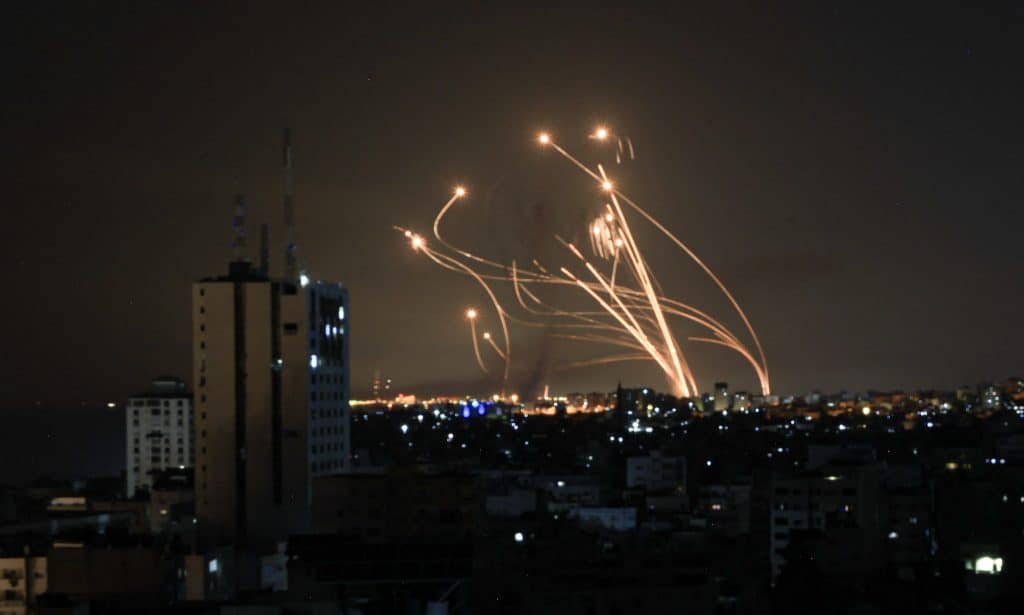
The Hamas terrorist group shocked Israel by carrying out a coordinated assault unlike anything the world has seen since Lashkar-e-Taiba’s terror assault on Mumbai in 2007 or al-Qaeda’s attack on 9/11. How Israel missed the signs of this attack will be illuminated in the months ahead. But what is missing in this discussion is something more elemental. An attack of this magnitude would not have been possible if Hamas was not afforded a safe haven.
Israel has actually granted the terrorist group a haven in the Gaza Strip for more than 16 years. Indeed, Hamas came to power by force in the 2007 Palestinian civil war during which the group ousted the Palestinian Authority from the coastal enclave. Since then, the organization has been granted the time and space to prepare for multiple rounds of conflict with Israel (2008, 2012, 2014, and 2021). It has been able to build its arsenal thanks to support from state sponsors of terror such as the Islamic Republic of Iran, not to mention Turkey and Qatar. But the key to the group’s ability to plan, train its forces, and execute the 10/7 attack with precision was its safe haven.
The importance of safe havens for terrorist groups is by now well documented. It was the subject of much analysis during the war on terror. After al-Qaeda’s devastating attack on the United States on September 11, 2001, the 9/11 Commission was tasked to determine how al-Qaeda was able to execute such a deadly attack. Safe haven was identified as one of the key factors in the terror group’s success. In fact, in April of 2001, just six months after the USS Cole bombing, the CIA warned that al-Qaeda’s “leadership, experience, resources, safe haven in Afghanistan, [and] focus on attacking [the] U.S” would lead to “more attacks.” Four months later, al-Qaeda launched the most devastating terror attack on U.S. soil in history.
The 9/11 Commission concluded in its final report published in 2004 that “Terrorists should no longer find safe haven where their organizations can grow and flourish.”
Yet in 2005, one year after the warnings of the 9/11 Commission, Israel took a fateful step in the wrong direction. Under duress from the George W. Bush administration, Israel agreed to withdraw Israeli forces unilaterally out of the Gaza Strip. This left a vacuum in Gaza for the better part of two years. The Palestinian Authority was able to cling to power for a while.
But after the elections of 2006, also imposed upon the region by the Bush administration, Gaza became a tinderbox. Hamas had won the elections, and the group was angered by the efforts mounted to deny their right to forge a government. Of course, there was no way that Israel, the United States, or even the Palestinian Authority would be willing to let the group designated by the U.S. government in 1997 as a Foreign Terrorist Organization take over. But this logic mattered little to Hamas. Within a year, it overran the Gaza Strip by force in a brutal internecine conflict.
In the four wars that followed against Israel, Hamas demonstrated repeatedly the importance of its safe haven. Hamas fired rockets that it was able to build or stockpile during periods of calm. It dug tunnels that enabled the group to both attack Israelis and smuggle money, goods, and weapons. It developed drone capabilities. It trained frogmen. And more.
When war erupted, Israel responded with judicious force, careful not to impact the 2.2 million people suffering under Hamas rule. Nonetheless, the Israelis were excoriated by their critics for responding at all. For this reason and others, Israel elected, time and again, to end each round of conflict with Hamas still firmly in power.
However, each successive war with the Hamas terrorists became more costly. Every rocket Israel shot out of the sky cost the Israelis $50,000. The Iron Dome defense system stopped more than 90% of them at great cost. And rockets occasionally slipped through, causing damage and fear. But the efficacy of Iron Dome gave Israel a false sense of security, and it also gave Israelis a sense that it did not need to respond with the full force of its militaries.
Reinforcing this notion was the government of the United States, which repeatedly told the Israelis to restrain themselves against Hamas. Erroneous criticism rang out across the American media, college campuses, and in the halls of Congress that Israel was wielding “disproportionate force” in the response it mounted against a weaker non-state actor. Special attention was also given to the population that suffered as a result of these sporadic battles.
The cost of allowing Hamas to operate inside its safe haven for years has finally come due. Israel paid a horrible price, with more than 1,300 slaughtered. It’s now clear that a war is on the horizon. This will be a war waged by Israel to dislodge and dismantle Hamas. It could be painful, but it is one that the United States must support. It’s time to stand aside and let our ally neutralize the safe haven on its border that should have been taken care of years ago.







